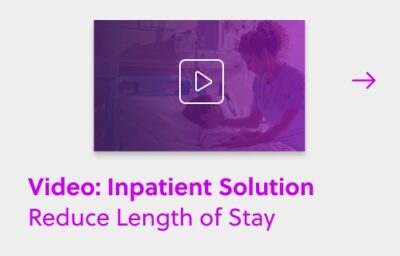As most ED managers or hospital executives would tell you, the flu is hitting hard right now. Waiting rooms are filling up, wait times are increasing, and so far it doesn’t seem to be slowing down.
At analyticsMD, our data feeds have been indicating a significant increase in the number of flu-related visits to local Emergency Departments in the past several weeks. ED teams are working around the clock to handle the surge in volume while still managing the flow of emergent cases flowing through.
The annual flu-season-surge is no surprise, and we all know to expect it. Yet the annual surge can also reveal deficiencies in ED operations that are not as obvious during the rest of the year. Perhaps now is as good a time as any to reflect on some strategies for managing through these surges and — most importantly — doing it in a data-driven way.
The basics
Each ED has a unique distribution of patient arrivals. Generally speaking, most Emergency Departments start to see peak incoming volumes sometime in the late morning or early afternoon, with the early morning and late evening hours being ‘quieter’ times from a patient arrival standpoint.
This, however, is a simplistic view of arrivals. In reality, this distribution looks different by day of week, by holidays versus non-holidays, and by season. And, of course, local events and factors can play a big role in shaping the rate at which patients arrive at the ED.
Most ED staff have an intuition for when arrivals will peak (as an aside: that ‘intuition’ may not actually match the story the data tells). This peak is when the ED feels the busiest. The truth, however, is that the staff’s fate for that day may have been sealed by what happened in the hours leading up to that peak.
‘The bus just pulled up and unloaded’
Here is the story that plays out time and time again. Early in the day, patients begin arriving at a moderate rate. All is well, it’s just business as usual. The ED triages, rooms and treats these patients at the usual pace. It isn’t long before most rooms are occupied. Then, ‘the wave’ hits – 12 patients arrive in the same hour along with two ambulances. In actual EDs, there is a saying for this: “the bus just pulled up and unloaded”. Now, doctors are scrambling to disposition patients that might have been discharged an hour ago if everyone knew that the bus was coming. New patients are piling up in the waiting room, nursing staff is stretched to its limits, and housekeeping gets requests to turn around multiple rooms simultaneously.
The ED staff acts heroically to respond to the ‘crisis’ and eventually churns through the volume, but no one feels great about the waiting and inefficiency they see. The heroic effort is commendable — but is this the best way to do business?
Probably not. A hidden culprit behind this scenario lies in what happens in the hours leading up to the ‘wave’. Those hours feel calm, and so there isn’t as much urgency to efficiently move patients through the department. But treating the hours before ‘the wave’ as routine can throw an ED into crisis mode once the real volume hits.
Being prepared
This all might seem obvious in principle, but it is more difficult to correct in practice. How do you motivate a staff to improve patient flow when the consequences aren’t immediately obvious? How do you keep staff focused on hitting target operational metrics even when there are empty beds to spare?
This is precisely where predictive decision support can make the difference. Rather than reacting to that patient surge when it happens, imagine if the charge nurse received a message warning her or him that a large number of patients are predicted to arrive in the next hour. Imagine even further that the message also identified several patients who can be discharged now but are still waiting for discharge orders. Imagine that the information also went to the doctors taking care of the patient. Finally, imagine that a warning simultaneously went to housekeeping, advising them that extra help will likely be needed in the ED to turn around beds soon.
In such a scenario, that ED would have a little more room to breath as the volume peaks. Ask any ED director or charge nurse, and he or she will tell you that sometimes you just need that little bit of extra room to maneuver to keep the ED train from coming off the tracks.
As the flu season rolls on, there will be more busy days ahead. But with predictive decision making and a more analytical view of how patient flow can have downstream effects, an ED can put its staff in a position to weather the storm – without asking for heroes.


